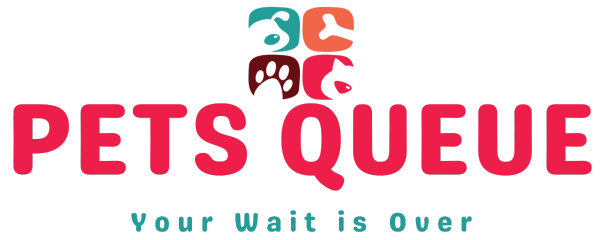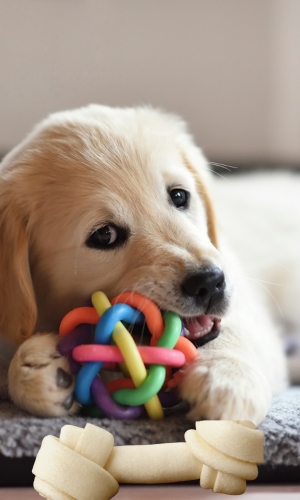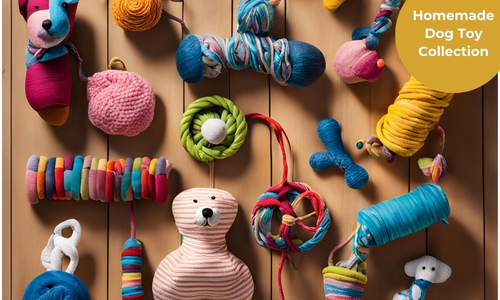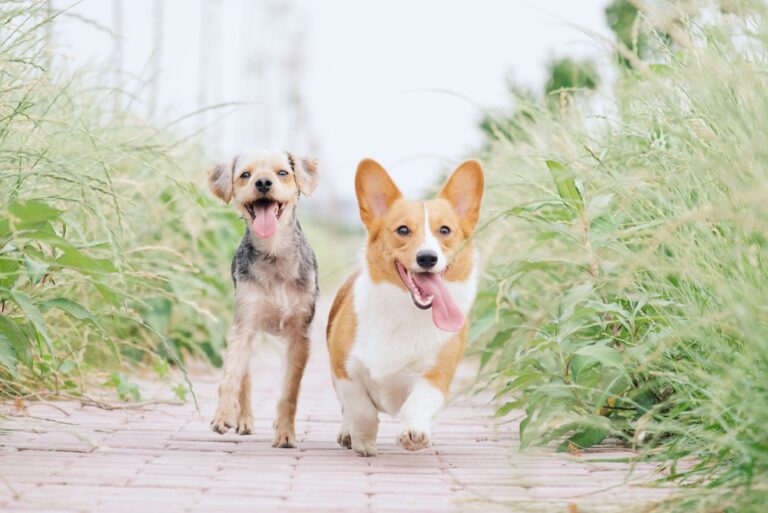Top 10 Chew Dog Toy Ideas to Banish Boredom and Boost Your Dog’s Happiness!
Dogs are naturally active and curious creatures, and when they get bored, it can lead to destructive behaviors like chewing furniture, excessive barking, or digging. A great way to keep your furry friend entertained is with chew toys designed to stimulate their mind and satisfy their natural chewing instincts. Not only do these toys curb boredom, but they also promote dental health, alleviate anxiety, and give your dog a constructive outlet for their energy.
One standout idea is treat-dispensing chew toys, which challenge your dog’s brain while rewarding them with a tasty surprise. Another favorite is durable rope toys that double as a tool for interactive play like tug-of-war. These toys aren’t just distractions—they’re tools for a healthier and happier pet.
In this article, we’ll explore ten amazing chew toy ideas for beating boredom, their benefits, style tips, and where to find them.
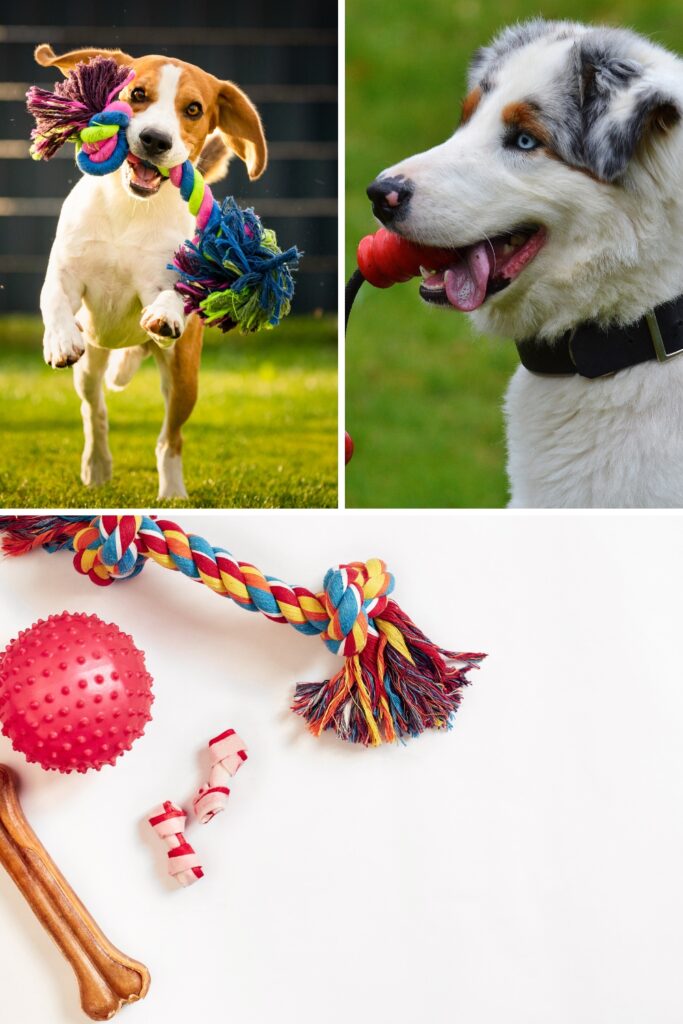
Read also: The Essential Role of Dog Toys in Grooming: How Play Enhances Your Dog’s Health and Grooming Routine
Teaching your dog play with Toys
Top 10 Chew Dog Toy Ideas for Boredom
1. Treat-Dispensing Chew Toys
- Introduction: Treat-dispensing toys, like the classic Kong, offer both mental stimulation and a delicious reward. Your dog has to work to get the treat out, keeping them entertained for hours.
- Why It’s Suitable: Perfect for dogs who love a challenge, these toys help improve problem-solving skills while providing a tasty incentive.
- Style Tips: Fill the toy with peanut butter, cheese, or kibble. For added difficulty, freeze it overnight.
- Best Occasions: Ideal for long workdays, keeping your dog busy when you’re not home.
- Where to Get: Available at pet stores or online retailers like Amazon.
- Price Range: $10–$25.
2. Durable Rope Toys
- Introduction: Rope toys are versatile and durable, great for chewing and interactive play. They also promote dental health by acting as floss for your dog’s teeth.
- Why It’s Suitable: These toys satisfy chewing instincts while strengthening the bond between you and your dog during games of tug.
- Style Tips: Look for natural cotton rope for added safety and choose vibrant colors for outdoor play.
- Best Occasions: Perfect for a game of tug-of-war or fetch at the park.
- Where to Get: Pet stores, online platforms, or DIY with cotton ropes.
- Price Range: $5–$20.
3. Interactive Puzzle Chew Toys
- Introduction: These toys combine chewing with brain games, requiring dogs to manipulate parts of the toy to access hidden treats.
- Why It’s Suitable: Keeps dogs mentally and physically stimulated, reducing the risk of boredom-induced behaviors.
- Style Tips: Choose toys with adjustable difficulty levels to match your dog’s skill level.
- Best Occasions: Great for rainy days or when your dog needs extra mental stimulation.
- Where to Get: Specialty pet stores or online.
- Price Range: $15–$40.
4. Rubber Chew Toys
- Introduction: Extremely durable, rubber chew toys are built to last, even for aggressive chewers. Many are designed with ridges to clean teeth and massage gums.
- Why It’s Suitable: Perfect for teething puppies or heavy chewers, offering hours of safe chewing.
- Style Tips: Opt for brightly colored toys to make them easy to spot outdoors.
- Best Occasions: Perfect for teething puppies or keeping high-energy dogs busy.
- Where to Get: Popular brands like Kong or Nylabone are widely available.
- Price Range: $10–$30.
5. Natural Antler Chews
- Introduction: Antlers are a long-lasting, natural alternative to synthetic toys, great for dogs who love to gnaw.
- Why It’s Suitable: Rich in minerals and completely safe, antlers are ideal for dogs who need a tough chew.
- Style Tips: Choose the right size for your dog to avoid choking hazards.
- Best Occasions: Great for quiet chewing sessions while watching TV.
- Where to Get: Available at pet stores or specialty natural pet product retailers.
- Price Range: $10–$40, depending on size.
6. Dental Chews
- Introduction: These toys are specifically designed to clean your dog’s teeth while they chew, helping reduce plaque buildup and improve gum health.
- Why It’s Suitable: Combines playtime with oral hygiene, making it a win-win for you and your dog.
- Style Tips: Look for options infused with flavors like mint or chicken to keep your dog engaged.
- Best Occasions: Use after meals or during quiet time for maximum dental benefits.
- Where to Get: Widely available at pet stores and online.
- Price Range: $5–$15.
7. Plush Chew Toys
- Introduction: Soft plush toys are perfect for light chewers and provide a comforting companion for anxious dogs.
- Why It’s Suitable: Great for smaller breeds or dogs that prefer a softer chewing experience.
- Style Tips: Choose washable plush toys for easy maintenance.
- Best Occasions: Ideal for bedtime or during crate training.
- Where to Get: Pet stores, online, or DIY from old clothes.
- Price Range: $5–$15.
8. Frozen Chew Toys
- Introduction: Frozen toys are an excellent option for teething puppies or dogs on a hot day.
- Why It’s Suitable: The cold sensation soothes sore gums and provides a refreshing treat.
- Style Tips: Freeze water, broth, or yogurt inside a durable toy for added flavor.
- Best Occasions: Perfect for summer days or teething relief.
- Where to Get: Most durable rubber toys can double as frozen chews.
- Price Range: $10–$25.
9. Ballistic Chew Toys
- Introduction: Made with tough materials like Kevlar or ballistic nylon, these toys are designed for dogs that love to chew aggressively.
- Why It’s Suitable: Highly durable, these toys are nearly indestructible and perfect for dogs with strong jaws.
- Style Tips: Look for reinforced seams for added durability.
- Best Occasions: Great for high-energy breeds and outdoor play.
- Where to Get: Specialty pet stores or online.
- Price Range: $15–$40.
10. DIY Chew Toys
- Introduction: Homemade toys, such as braided old T-shirts or frozen carrots, are budget-friendly and customizable for your dog’s preferences.
- Why It’s Suitable: Perfect for pet parents who want to upcycle materials or create unique toys tailored to their dog.
- Style Tips: Experiment with different textures and scents to keep your dog engaged.
- Best Occasions: Perfect for budget-conscious owners or those who enjoy DIY projects.
- Where to Get: Made at home from household items.
- Price Range: Free to $5.
Detailed Buying Guide: Choosing the Perfect Chew Toy
Factors to Consider
| Factor | Details |
|---|---|
| Durability | Choose materials like rubber, nylon, or natural antlers for aggressive chewers. |
| Size | Select a size appropriate for your dog to prevent choking hazards. |
| Safety | Avoid toys with small parts that can be swallowed. |
| Purpose | Decide if you need a toy for mental stimulation, dental health, or stress relief. |
| Material | Opt for non-toxic and pet-safe materials. |
Cost Analysis
On average, chew toys range from $5 to $40, depending on the material and brand. DIY options are the most budget-friendly, while high-quality interactive toys may require a larger investment.
FAQs
| Question | Answer |
|---|---|
| Are chew toys safe for puppies? | Yes, as long as they’re size-appropriate and made from puppy-safe materials. |
| How often should I replace chew toys? | Inspect toys weekly and replace them if they show signs of wear. |
| Can chew toys improve dental health? | Yes, certain toys help remove plaque and stimulate gums. |
| Are natural antlers safe for all dogs? | They’re best for moderate chewers; aggressive chewers may crack their teeth. |
| How many chew toys should a dog have? | At least 3–5 toys to rotate and maintain interest. |
Exploring the Environmental Benefits of Chew Toys
As dog owners, it’s essential to consider how our choices impact not only our pets but also the environment. Chew toys, when selected thoughtfully, can play a role in promoting sustainability. Let’s dive into how eco-friendly options benefit your dog and the planet.
1. Sustainable Materials
Many chew toys are now made from recycled, biodegradable, or sustainably sourced materials. Choosing toys made from these materials reduces waste and minimizes the environmental footprint of your pet products.
- Recycled Rubber and Plastics: Some manufacturers use recycled materials to create durable toys, ensuring that old items don’t end up in landfills.
- Natural Fibers: Rope toys made from organic cotton or hemp are biodegradable and safer for your pet to chew on.
2. Long-Lasting Durability
Investing in durable chew toys means fewer replacements, reducing the amount of waste over time. High-quality materials, such as natural rubber or tough nylon, can withstand aggressive chewing and last for months or even years.
3. DIY Chew Toys for Sustainability
Creating chew toys at home from upcycled materials like old T-shirts, jeans, or towels is an eco-friendly and budget-conscious approach. This not only reduces waste but also adds a personal touch to your dog’s playtime.
Environmental Tip: Always check the label for certifications like “non-toxic,” “biodegradable,” or “made from recycled materials.” These markers indicate eco-conscious manufacturing processes.
Deeper Insights into Dog Behavior: Why Chew Toys Are Essential
Understanding your dog’s natural instincts and behaviors can help you select the perfect chew toys and use them effectively. Here’s a closer look at why dogs love to chew and how toys fulfill these needs:
1. Chewing as a Natural Instinct
Chewing is instinctive for dogs. It helps them explore their environment, relieve stress, and keep their jaws strong. For puppies, chewing soothes teething pain, while for adult dogs, it provides mental stimulation.
- Behavioral Note: Dogs that lack appropriate outlets for their chewing instincts may resort to destructive behaviors, such as gnawing on furniture or shoes.
2. Mental Stimulation and Enrichment
Interactive and puzzle chew toys challenge your dog’s brain. This is especially important for high-energy or working breeds, which require mental stimulation to stay happy and healthy.
- Behavioral Tip: Rotating toys every week keeps them fresh and exciting, reducing the risk of boredom.
3. Alleviating Anxiety
Chewing releases endorphins that help reduce anxiety and stress in dogs. Toys designed for calming purposes, like scented or textured options, can comfort dogs during stressful situations, such as thunderstorms or vet visits.
Tips for Introducing Chew Toys to Picky Dogs
Some dogs are naturally selective about their toys, which can make it challenging to find the right one. Here are strategies to ensure your dog embraces their new chew toy:
1. Use Familiar Scents
Dogs rely heavily on their sense of smell. To make a new toy more appealing, rub it with something familiar to your dog, such as a bit of their favorite treat or a blanket they use.
2. Start with Variety
Offer a mix of textures, shapes, and sizes to see which type your dog prefers. For instance, some dogs may enjoy soft plush toys, while others prefer tough rubber or rope.
3. Incorporate Play
Introduce the toy during playtime to make it a part of a fun, engaging activity. Tug-of-war with a rope toy or filling a puzzle toy with treats can create a positive association.
4. Reward Interaction
Encourage your dog to engage with the toy by rewarding them with treats or praise whenever they show interest or start chewing on it.
Case Studies: The Benefits of Chew Toys in Real Life
Case Study 1: Max the Chewer
Max, a 2-year-old Labrador Retriever, had a habit of chewing on furniture legs whenever left alone. His owner introduced a durable rubber chew toy filled with peanut butter. Within weeks, Max’s destructive chewing habits subsided, and he became calmer during his owner’s absence.
Case Study 2: Bella the Picky Pup
Bella, a small Maltese, showed little interest in toys. Her owner tried various options but found success with a soft plush toy infused with lavender. The toy became Bella’s comfort object, helping her stay relaxed during grooming and vet visits.
Chew Toy Buying Guide: Key Factors to Consider
| Factor | Details |
|---|---|
| Material | Look for non-toxic, BPA-free, or natural materials like rubber, nylon, or cotton. |
| Durability | Heavy chewers need tougher toys like Kong or Nylabone products, while light chewers can enjoy plush toys. |
| Size | Ensure the toy is appropriate for your dog’s size to avoid choking hazards. |
| Purpose | Choose toys based on the desired benefit: dental health, mental stimulation, or anxiety relief. |
| Safety | Avoid toys with small parts or weak seams that could pose a choking hazard. |
Price Breakdown
| Toy Type | Average Price Range |
|---|---|
| Treat-Dispensing Toys | $10–$25 |
| Rope Toys | $5–$20 |
| Durable Rubber Toys | $10–$30 |
| DIY Chew Toys | Free–$5 |
FAQs: Chew Toys for Boredom
| Question | Answer |
|---|---|
| How often should I replace chew toys? | Inspect toys weekly and replace them if they’re damaged or worn to avoid choking hazards. |
| Can chew toys damage my dog’s teeth? | Hard toys like bones or antlers can sometimes cause fractures. Always supervise chewing. |
| What’s the best chew toy for aggressive chewers? | Durable options like Kong or ballistic nylon toys are ideal for heavy chewers. |
| Are natural chew toys better than synthetic? | Natural options like antlers or rawhide alternatives are great but ensure they’re processed safely. |
| How many toys should my dog have? | Aim for 3–5 toys in rotation to maintain your dog’s interest and prevent boredom. |
Statistics: The Impact of Chew Toys
- Behavioral Benefits: According to a study, 68% of pet owners observed a reduction in destructive behaviors after introducing chew toys.
- Dental Health: Chew toys can reduce plaque buildup by 40%, contributing to healthier gums and teeth.
- Mental Stimulation: Dogs with access to puzzle toys show a 50% increase in problem-solving behaviors compared to those without.
Conclusion
Chew toys are more than just playthings; they’re essential tools for keeping your dog mentally stimulated, physically active, and emotionally balanced. By understanding your dog’s natural behaviors and choosing toys that align with their needs, you can transform boredom into an opportunity for growth and happiness. From durable rubber toys to eco-friendly DIY options, the perfect chew toy is out there for every dog.
Invest in high-quality, safe options, and watch as your dog’s overall well-being improves—one chew at a time!
